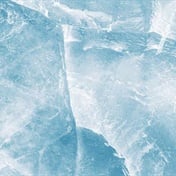Amid the highest recorded pollen counts in history, Health24 will be bringing you exclusive pollen count updates courtesy of the UCT Lung Institute's Allergy and Immunology Unit.
Here are the major city updates for 6 November:
Cape Town (Western Cape)
High grass counts were seen. Tree levels dropped significantly and only cypress, pine and Rhus were detected. Just one weed was detected and this was Stoebe or slangbos. Mould levels were low but Alternaria, an allergenic spore is increasing.
Count: 59 (very high) [Last week: 97 (very high)]
Johannesburg (Gauteng)
Low tree levels included the types bush willow (Combretaceae), cypress (Cupressus spp), jacaranda (Fabaceae), white mulberry (Moraceae), gum (Myrtaceae), Prunus, yellowwood (Podocarpus spp), kareeboom (Searsia/Rhus, plane (Platanus spp and oak (Quercus spp).
Low weed levels were seen and the types detected included Euphorbia, English Plantain (Plantago), the pink or carnation family (Caryophyllaceae) and mugwort (Artemisia spp). Grasses and moulds were very low.
Count: 6 (moderate) [Last week: 15 (moderate)]
Pretoria (Gauteng)
Low tree levels included Birch (Betula), jacaranda (Fabaceae), pecan (Carya spp), pine (pinus), prosopis (mesquite), kareeboom Searsia/Rhus and white mulberry (Morus spp).
Low weed levels were observed and the types detected were the daisy family, Euphorbia, slangbos (Stoebe) and waxberry (Morella). Moulds were low and grasses were moderate.
Count: 22 (high) [Last week: 27 (high)]
Bloemfontein (Orange Free State)
Grasses increased to moderate levels during this sampling week. Tree levels were low and the types detected were Buddleja, olive (Oleaceae), and birch (Betula). Low weed levels were detected and only the daisy family was represented. Moulds were low.
Count: 55 (very high) [Last week: 18 (moderate)]
Kimberley (Northern Cape)
Low tree levels included the types white stinkwood (Celtis), gum (Myrtaceae), kareeboom (searsia/Rhus), pecan (Carya spp) and olive (Olea spp). Weeds detected at low levels were ferns (Polypodiaceae), slangbos (Stoebe) and sorrel (Rumex). Grasses and moulds were low.
Count: 5 (low) [Last week: 8 (moderate)]
Durban (KZN)
Tree levels were low but varied and included the types white stinkwood (Celtis), gum (Myrtaceae), birch (Betula), white mulberry (Morus), yellowwood (Podocarpus), pine (Pinus), cypress (Cupressus spp), casuarina and pecan (Carya). Low weeds were detected and these included English Plantain (Plantago), waxberry (Morella) and Pellitory-of-the-wall (Parietaria). Grasses were low as were moulds.
Count: 5 (low) [Last week: 7 (moderate)]
Port Elizabeth (Eastern Cape)
Tree levels were seen and only olive (Olea spp) and pine were detected. Low weed levels included the daisy family (Asteraceae), the pinks or carnation family (Caryophyllaceae), sedges (Cyperus spp), ericas, and Passerina. Grasses and moulds were low.
Count: 8 (moderate) [Last week: 6 (moderate)
See the full report HERE.
Reference ranges:Overall, Trees, Grasses and Weeds all use the same values (grains per cubic metres of air)
Overall count is the daily average of pollen grains per cubic metres of air (trees plus grasses plus weeds)
In partnership with the the UCT Lung Institute's Allergy and Immunology Unit.
As the pollen problem worsens, precise and expanded monitoring becomes even more essential. And here's how you can help.




 Publications
Publications
 Partners
Partners















